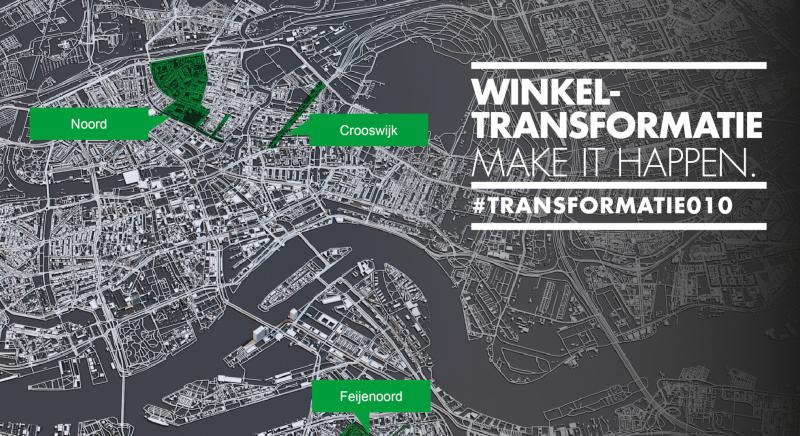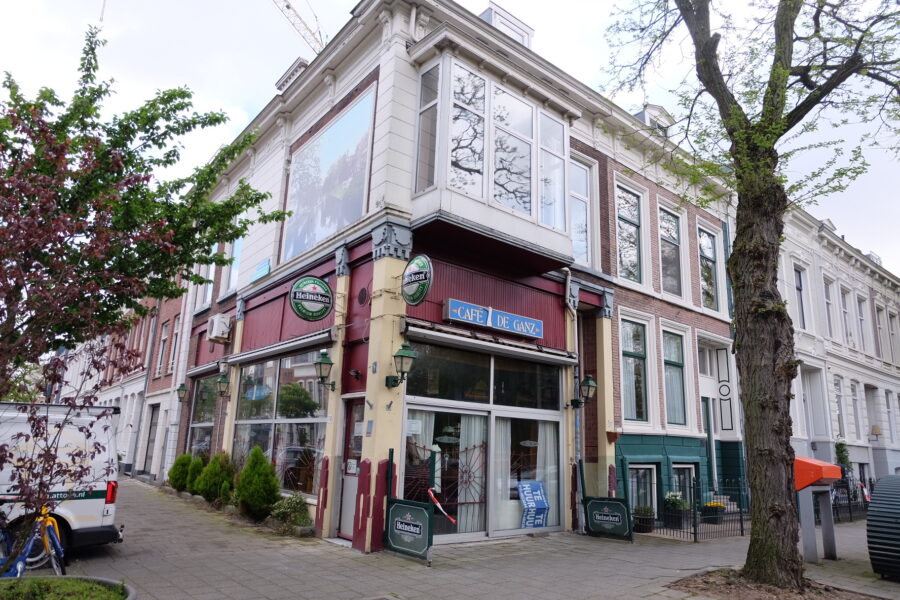
Transformation management Rotterdam Noord
“Transforming shops: Make it happen!”
STIPO is supporting the transformation of vacant retail space in Rotterdam Noord. STIPO is experimenting with new measures and creating new partnerships to encourage the transformation of unused properties. These properties are located in Oude Noorden and the streets surrounding it. These streets have a relatively high vacancy rate. Indeed, in 2018 the rate was three times higher than in the rest of Rotterdam. The vacant properties represent missed income for the Noord district, which we need to put to good use.
Transformation management pilot project
The Municipality of Rotterdam has set up a pilot project for a period of three years to promote the transformation of vacant retail properties into homes. But there are other potential functions as well. The transformation pilot project will clarify which measures are successful. After the pilot project, the municipality will decide whether the successful measures should be introduced throughout the city.
Our approach
The transformation approach has several aims. First of all, the structure of the retail sector needs to be strengthened: the supply of stores around the main shopping streets needs to be reduced, starting with the vacant stores. In addition, owners of vacant retail premises in the streets around the shopping area should be encouraged to transform their vacant retail premises into homes. In addition to empty retail premises, there are also empty business premises, offices and other unused spaces, which can be transformed into dwellings. Tackling all of these vacant premises will have a major impact on the quality of life at the plinth level, not to mention the area’s economic value. The sensitivity to vacancy in social debates with entrepreneurs and residents is high, which is why it’s important that the municipality actively manages the situation and why reducing vacancy is a key part of the transformation manager’s task.


STIPO is acting as a transformation manager in this pilot project and talking to real estate owners about their vacant properties. After identifying empty real estate, STIPO approaches the owners. How do they want to use the property? What kind of help could they use? This ‘red carpet’ tactic encourages real estate owners to transform their real estate into home(s) or sell it for transformation. Our method lowers the threshold for transformation. The real estate owners can get help from experts, for example to assess the structural condition of their property. If the owners choose to transform the properties, they receive assistance in taking practical steps that create a home but also socio-cultural functions, a small office or business. Furthermore, a corner building strategy emerged from the transformation approach, which describes how one must think critically about how to use corner buildings, as well as the appearance of the real estate and the outdoor space. Corner buildings are essential to the urban fabric and often function as a showcase for the street, which makes them more suitable for economic or public functions compared to housing.
The results of two years’ work
More than 15 buildings have now been transformed, in which STIPO played some kind of a role in the process. A good example of this is the laundry facility, De Wasserij. STIPO is also involved in more than 20 ongoing transformation processes. We are trying to speed these up through different kinds of incentives.
STIPO connects individuals to the right parties by engaging and brainstorming with them. Meetings are also held giving owners, tenants and the municipality the opportunity to talk to each other. Ties are established with other sectors and the building’s surroundings. The transformation cannot be seen in isolation from what’s happening in the immediate surroundings. In addition, the transformation doesn’t only concern physical measures, it’s also about creating appropriate functions. It’s about building coalitions between parties that play a role in the transformation. The transformation strategy ties in with the Food Fashion and Design area around Zwaanshals and Zaagmolenkade. But also the transformation of Hofbogen and ZOHO. Part of the aim is to seek cross-fertilisation with the owners/developers involved in these developments. In addition, STIPO is working intensively on cooperation at the area level, by making presentations on the information market, holding implementation consultations with relevant civil servants and coordinating discussions on the economy and area development. In addition, we periodically meet with the Woonstad and Havensteder housing associations for coordination purposes.
The positive energy regarding the transformation approach is remarkable; residents and owners are willing to use the momentum to improve properties and strengthen the neighbourhood together.

